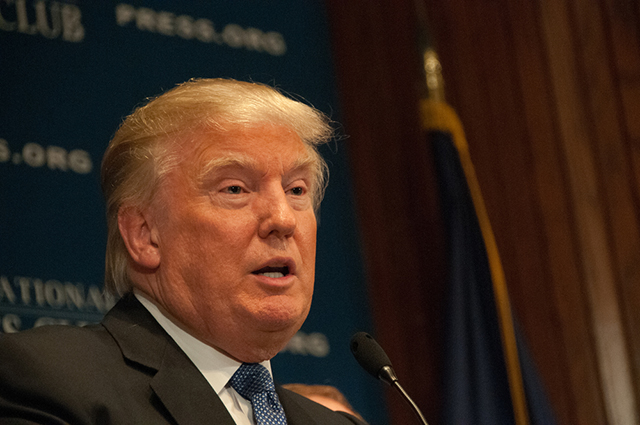
Last week, Republican presidential candidate Donald Trump released his plan for changing the tax code. Trump wants big across-the-board tax cuts, with the largest tax cuts going to the wealthy. He claimed that his tax cut won’t lead to a loss of revenue since it would lead to a huge spurt of economic growth. His number was 6.0 percent annual growth over the next decade, topping Jeb Bush’s 4.0 percent growth rate by two full percentage points.
Many of the reports on the plan commented on the growth assumption and pointed out that few, if any, economists took it seriously. As a practical matter, we have seen this story before. Ronald Reagan put in place a large tax cut in the 1980s and George W. Bush did the same in the last decade. You have to try very hard to find a positive growth effect from either. Certainly no one could make the case with a straight face that these sorts of tax cut proposals could even get us to Bush’s 4.0 percent number, much less Trump’s 6.0 percent.
But apart from what the tax cuts may or may not be able to do in terms of growth, there is also the matter of how the Federal Reserve Board would react. If that sounds strange, you should be very angry at the reporters at your favorite news outlet, because they should have been talking about this part of the picture.
Suppose that Donald Trump’s tax cut really is the magic elixir that would get the economy to grow 6.0 percent a year. But what if the people at the Fed’s Open Market Committee (FOMC) don’t recognize this fact? After all, many on the FOMC want to raise interest rates now because they think the economy’s current 2.0 percent growth rate is too fast.
If the FOMC thinks the economy is still bound by the pre-Trump tax cut rules then it will believe that inflation will start to accelerate out of control if the unemployment rate falls much below its current 5.1 percent level. In this case, the Fed would raise interest rates when they saw the Trump tax cuts boosting growth and lowering unemployment.
Higher interest rates would slow house buying and new construction, discourage car sales and put a crimp in both public and private investment. If the Fed raises interest rates high enough, it could fully offset the boost that Trump’s tax cut is giving to the economy. That would mean that even though the Trump tax cuts might be the best thing for the economy since the internet (okay, better than the internet), we wouldn’t see any growth dividend because the Fed would not allow it.
For this reason, reporters should be asking questions about the Fed’s response to a tax cut. If the Fed is likely to simply slam on the brakes to offset any possible stimulus, then a tax plan will have little prospect of boosting growth.
Of course this logic applies across the board to any economic proposal the candidates put forward. Senator Sanders wants to boost the economy by spending on infrastructure. Both Senator Sanders and Secretary Clinton are proposing measures to promote paid family leave and increase the availability of child care. In both cases, the candidates argue their proposals will be good for growth, in addition to making it easier for people to balance the demands of work and family.
In each of these cases, it is important to ask about the reaction of the Federal Reserve Board. If additional spending creates more jobs, or a reduction in the length of the average workweek or work year allows more people to be employed, then the Fed will factor this job growth into its decisions on interest rates. If the FOMC holds the view that more jobs and lower unemployment increase the risk of inflation, then it can raise interest rates enough to reverse the boost to employment.
The Fed is a central player in determining the rate of growth and the level of employment. The public should understand this fact. It means that the when a candidate puts forward an economic plan, the question is not just what it will do for the economy, but also what the Fed thinks it will do. This second part of the equation needs to get into the coverage of the presidential campaigns.
Our most important fundraising appeal of the year
December is the most critical time of year for Truthout, because our nonprofit news is funded almost entirely by individual donations from readers like you. So before you navigate away, we ask that you take just a second to support Truthout with a tax-deductible donation.
This year is a little different. We are up against a far-reaching, wide-scale attack on press freedom coming from the Trump administration. 2025 was a year of frightening censorship, news industry corporate consolidation, and worsening financial conditions for progressive nonprofits across the board.
We can only resist Trump’s agenda by cultivating a strong base of support. The right-wing mediasphere is funded comfortably by billionaire owners and venture capitalist philanthropists. At Truthout, we have you.
We’ve set an ambitious target for our year-end campaign — a goal of $133,000 to keep up our fight against authoritarianism in 2026. Please take a meaningful action in this fight: make a one-time or monthly donation to Truthout before December 31. If you have the means, please dig deep.